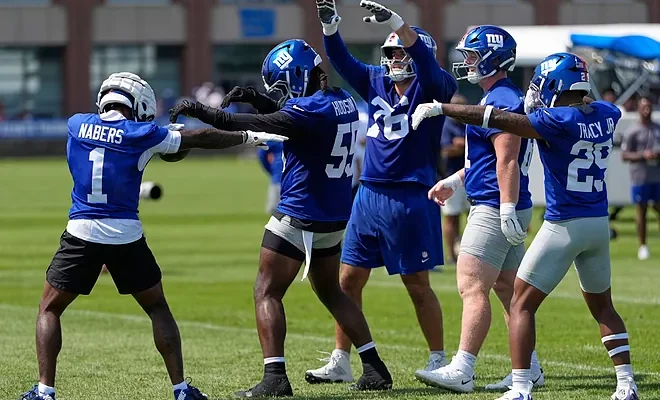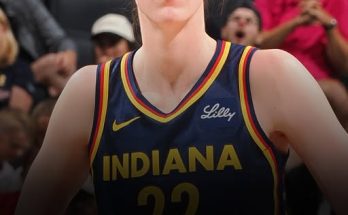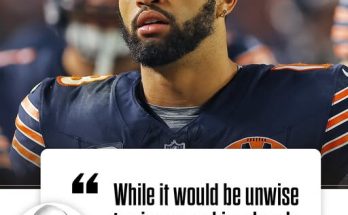The recent declaration from Eli Manning, the beloved two-time Super Bowl-winning quarterback, that his former team, the New York Giants, is poised for a “surprising Super Bowl run” has sent ripples of excitement and skepticism throughout the NFL landscape. For a franchise that has largely struggled in recent seasons, with a 3-14 record last year and bleak playoff odds (currently 10.1% for 2025, and a mere 0.5% to win the Super Bowl), Manning’s words might seem audacious. Yet, coming from a man who famously led the Giants to two of the most improbable Super Bowl victories in NFL history, his optimism cannot be dismissed out of hand. This isn’t just a former player offering a platitude; it’s Eli Manning, the architect of upset, speaking with a conviction born of experience. To truly unpack the potential validity of Manning’s bold claim, we must delve into the multifaceted dynamics of the modern NFL, analyze the current state of the New York Giants, and draw parallels to past “surprise” Super Bowl contenders.
The very notion of a “surprising Super Bowl run” is etched into the Giants’ recent history. In 2007, they were a 10-6 wild card team, facing the undefeated New England Patriots in Super Bowl XLII. Against all odds, they pulled off one of the greatest upsets in sports history. Four years later, in 2011, they again defied expectations, sneaking into the playoffs with a 9-7 record and embarking on another improbable journey that culminated in a Super Bowl XLVI victory over those same Patriots. These historical precedents, intrinsically linked to Manning’s own playing career, lend a unique weight to his current prediction. He understands the formula for an underdog triumph, not from theory, but from lived, triumphant experience.
So, what exactly constitutes a “surprise” Super Bowl run in the modern NFL, and what elements typically converge to create such a phenomenon? It’s rarely about a team that’s universally predicted to be a contender suddenly living up to its billing. Instead, it’s often a confluence of factors: a surging defense, opportunistic playmaking, clutch quarterback play (sometimes from an unexpected source), astute coaching, and a favorable run of health and matchups at the right time. The league’s inherent parity, amplified by the salary cap and the cyclical nature of team building, creates a fertile ground for such upsets. The idea of a dominant dynasty holding a stranglehold on the Lombardi Trophy has largely faded, replaced by a landscape where any given Sunday, and indeed, any given season, can see a dramatic shift in power. Teams can go from last to first, or from middling to magnificent, with a few key additions, a change in philosophy, or the sudden emergence of young talent. The NFL is a league of fine margins, where momentum, belief, and a healthy dose of luck can often outweigh raw talent disparities on paper.
Let’s examine the current New York Giants roster and see if we can identify the seeds of a potential surprise. On the defensive side of the ball, there’s genuine cause for optimism. ESPN’s Mina Kimes recently ranked the Giants as a top-10 defense for 2025, largely due to their formidable defensive front. Brian Burns, acquired in the offseason, is a proven pass rusher with 54.5 sacks since 2019. Kayvon Thibodeaux, while still developing, has shown flashes of his elite potential with 17 sacks over the past two seasons. The addition of Abdul Carter, a highly touted rookie pass rusher drafted third overall, adds another layer of disruption to an already potent unit. Dexter Lawrence II, a two-time Second-Team All-Pro, anchors the interior of the defensive line, making it a nightmare for opposing offensive lines. The presence of versatile safeties like Jevon Holland and Paulson Adebo, along with the promising rookie Tyler Nubin, should stabilize a secondary that has sometimes been a weak point. A dominant pass rush can mask deficiencies elsewhere and fundamentally alter the complexion of games, forcing turnovers and allowing the offense more opportunities. If this defensive front truly “goes nuclear,” as some analysts suggest, it provides a strong foundation for any playoff push.
Offensively, the picture is more complex, and perhaps where the “surprise” element truly comes into play. The Giants made significant changes at quarterback, bringing in Russell Wilson and Jameis Winston, and also drafting rookie Jaxson Dart. This is a complete overhaul from last year’s lineup, which struggled mightily, scoring a paltry 16.1 points per game (31st in the league). The hope is that Wilson, even if he’s not the MVP-caliber player he once was, can provide stability, veteran leadership, and a proven ability to make plays when it matters most. His experience in high-pressure situations, including a Super Bowl victory, is invaluable. Behind him, Winston offers a high-variance, gunslinger style that, on a good day, can ignite an offense, while Dart represents the long-term future. The emergence of Malik Nabers as a potential superstar wide receiver is a significant development. A true alpha receiver can elevate an entire offense, creating opportunities for others and bailing out a struggling quarterback. However, the offensive line remains a crucial question mark. Even with a talented quarterback and playmakers, a leaky offensive line can derail an entire season. For the Giants to truly surprise, this unit must show marked improvement, providing enough time for Wilson (or whoever is under center) to operate and opening running lanes.
Beyond the raw talent on the roster, the intangible factors are often what propel a “surprise” team. Chemistry, resilience, and a collective belief in the coaching staff’s vision are paramount. The Giants, under head coach Brian Daboll, showed flashes of this in 2022, making a surprising playoff appearance before a regression in 2023. Can they recapture that magic? Manning’s belief, coming from within the organization (he holds a business operations and fan engagement role with the Giants), could signal a renewed sense of purpose and belief within the locker room. The team’s strength of schedule, currently ranked as the toughest in the NFL, presents a significant hurdle. They’ll face formidable opponents, including an improved Commanders team, tough matchups against the NFC North and AFC West, and additional games against the 49ers and Patriots. Navigating such a gauntlet will require sustained excellence, mental toughness, and a refusal to be intimidated by formidable opponents.
Looking at historical “surprise” Super Bowl teams, we can glean further insights. The 1999 St. Louis Rams, going from a 4-12 record to Super Bowl champions with Kurt Warner stepping in at quarterback, is a prime example of a team leveraging unexpected talent and a revolutionary offensive scheme. The 2003 Carolina Panthers, led by journeyman Jake Delhomme, similarly defied expectations with a strong defense and a breakout year from Steve Smith. The 2021 Cincinnati Bengals, despite having worse odds than all but two teams, rode the ascendance of Joe Burrow and Ja’Marr Chase to a Super Bowl appearance. What these teams share is not necessarily a roster brimming with Hall of Famers at every position, but rather a perfect storm of factors: exceptional quarterback play (often exceeding expectations), a strong defensive identity, clutch performances in critical moments, and a collective belief that transcended their pre-season projections.
For the Giants, the equation might hinge on Russell Wilson. While his recent performance has been scrutinized, a change of scenery and a renewed focus could unlock a late-career resurgence. If he can efficiently manage the game, protect the football, and deliver in crucial situations, much like Eli Manning himself did in his Super Bowl runs, the Giants’ potent pass rush could carry them. The ability to force turnovers and generate pressure on opposing quarterbacks will be their calling card. If the offense can simply be opportunistic and avoid self-inflicted wounds, relying on Malik Nabers for explosive plays and a resurgent running game, they could put themselves in a position to win close games.
The challenge, as always, will be consistency. A surprising run isn’t built on one or two good games, but on sustained performance over a grueling 17-game season and then through the pressure cooker of the playoffs. The Giants will need to prove they can beat playoff-caliber teams, not just occasional upsets. Their schedule demands it. The NFC East, projected to be highly competitive with three 10+ win teams, will also test their mettle.
In conclusion, Eli Manning’s confident prediction is far more than just sentimentality. It’s a statement rooted in his unique understanding of what it takes for an underdog team, particularly his underdog team, to reach the pinnacle of the NFL. While the odds are undeniably stacked against them, the current Giants roster possesses several key ingredients for a surprising run: a potentially elite defensive front, a veteran quarterback with a championship pedigree (albeit with recent struggles), and a budding superstar at wide receiver. The path will be arduous, requiring significant improvement from the offensive line, consistent play from all three phases, and a fair share of luck. But if the Giants can harness the underdog mentality, play with the same grit and determination that characterized Manning’s own Super Bowl teams, and find ways to win the close games, his audacious prediction might just materialize into another chapter of improbable Giants history. It’s a narrative that, for Giants fans, is as intoxicating as it is familiar, and with Eli Manning himself now a prominent voice echoing that possibility, the whispers of a surprising Super Bowl run suddenly feel a little less like fantasy and a lot more like a tangible, if difficult, dream.



